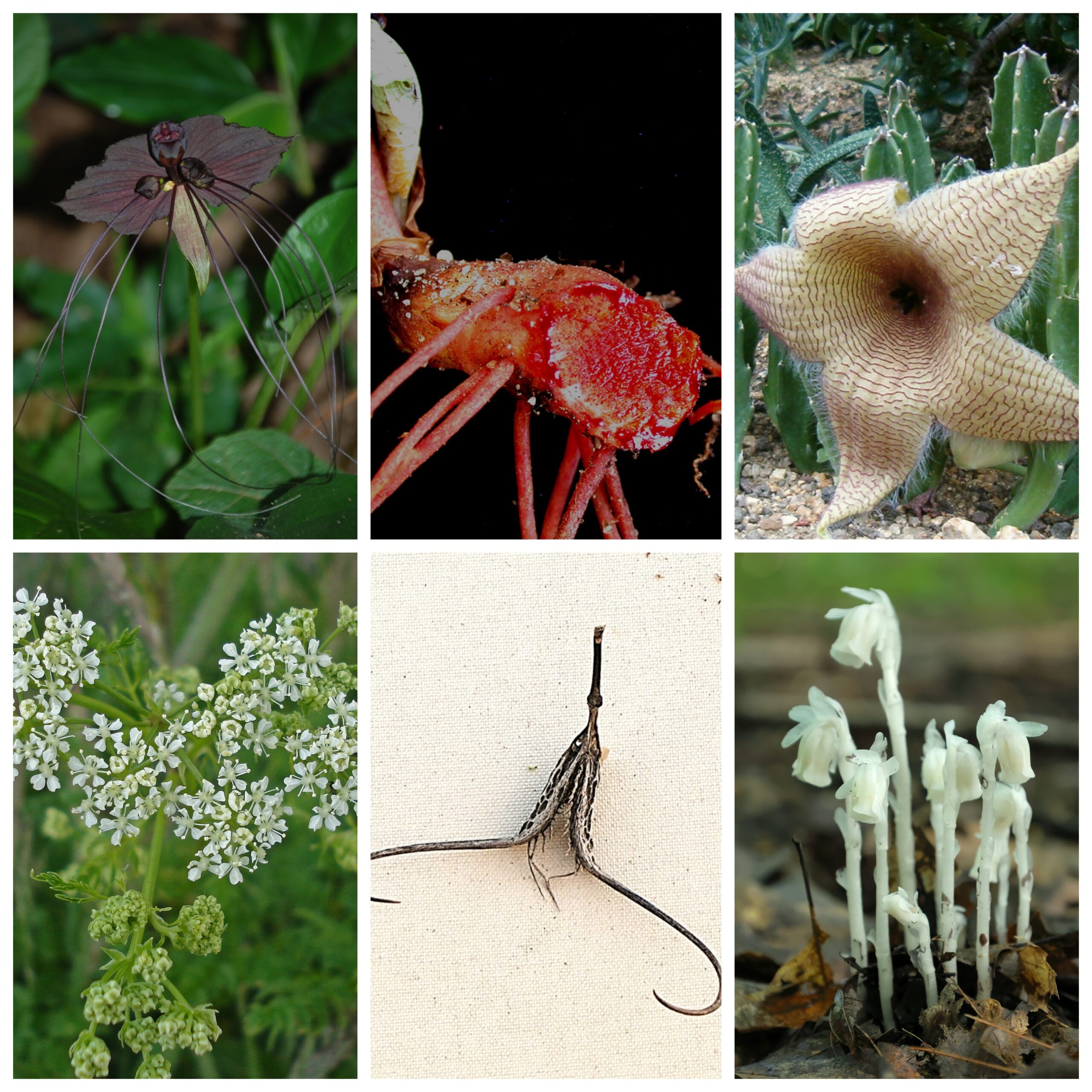Halloween’s little greenhouse of horrors

COLUMBIA, Mo. — University of Missouri Extension horticulturist Michele Warmund invites you to explore the weird world of plants with terrifying names and demonic smells.
In a press release, Warmund said, “Enter, if you dare, into the ghoulish side of the plant world.”
Some of Warmund’s wicked good greenies:
Brain cactus. This wonder looks like a human brain with hairy spines. It grows to six inches tall when planted in well-drained cactus potting mix. It loves warm rooms with full sun and needs little water. Plant one in a skull container and shine a light on it in a darkened room, says Warmund. Tell visitors to “fasten their sheet belts” before viewing.
Blood root. You’ll be saying “Fangs for the memories” if you find this native wildflower in shady woodlands and along streams. In March and April, it produces white-petaled flowers with yellow centers. However, danger lurks beneath. Its fleshy underground stems and roots drip with macabre reddish fluid when cut. Its sap can cause a rash, and the plant is poisonous when ingested in large amounts.
Devil’s claw. This demon of a plant grabs your attention when its seed pods latch onto your clothing. When dry, the reflexed appendages of its fruit capsules also can attach to the fur of animals. Worse yet, cattle can starve when the clawlike pods attach to their mouthparts. It also smells bad when flowering, offering “a breath of fresh scare.”
During pollination, its flowers snap shut when touched by an insect or fingertip. This wild plant grows in open areas along the Missouri River and in southern counties of the state.
Poison hemlock. This biennial plant contains a witches’ brew of poisonous alkaloid compounds in its leaves, flowers and seeds. It grows to 10 feet tall in moist soil along roadsides, pastures and wasteland. It resembles Queen Anne’s lace, also known as wild carrot, which grows only two feet tall.
As it is highly toxic to humans and pets, poison hemlock is best left growing in the wild. This notorious plant remains linked with Socrates, who perished after drinking a potent concoction of it in 399 B.C. Perhaps his last words of wisdom were “Eat, drink and be scary.”
Carrion plant. The large, star-shaped flowers of the carrion plant produce an odor similar to that of rotting flesh. The stench will send trick-or-treaters screaming with horror. Although repugnant to humans, flies find it “eerie-istible” for pollination. Carrion plants are spineless succulents native to desert regions. Curious sniffers can get a whiff at the Missouri Botanical Garden and other public greenhouses when in bloom, which is only one to three days per year.
Corpse flower. Another plant with a malodorous flower is the titan arum, or corpse flower. Short and sweet, it’s not. This giant plant grows to eight feet tall and needs 5-10 years to produce a spectacular flower. For plant enthusiasts, the unfurling of a huge leaf, exposing the eye-popping flower, is a highly anticipated event at boo-tanical gardens for those “graving” the smell of death and demise. At peak bloom, the flower reeks of putrid odor for only 6-12 hours.
Black bat. Black bat, or devil plant, produces flowers up to 12 inches wide. This “bat to the bone” plant is indigenous to rainforests. Winglike bracts surround its dark purple flowers with 8-10 inch whiskers at the base and drive mammal-biting midges batty.
Indian pipe. This spooky plant grows in clusters in many Missouri counties. Its white stems lack chlorophyll, giving it a ghostly appearance. A drooping solitary flower blooms at the end of each stem from August to October.
Learn more about these and other plants at MU’s Integrated Pest Management website at https://ipm.missouri.edu.
Miss Clipping Out Stories to Save for Later?
Click the Purchase Story button below to order a print of this story. We will print it for you on matte photo paper to keep forever.

